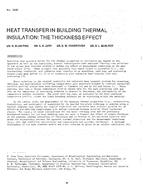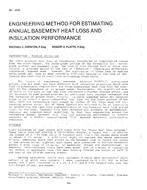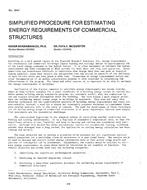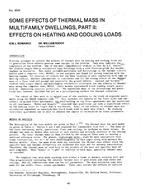-
-
Available Formats
- Options
- Availability
- Priced From ( in USD )
-
Available Formats
-
- Immediate download
- $16.00
- Add to Cart
Customers Who Bought This Also Bought
-

CI-2640 -- Heat Transfer in Building Thermal Insulation: ...
Priced From $16.00 -

CI-2649 -- Thermal Room Models for Control Analysis
Priced From $16.00 -

CI-2656 -- Engineering Method for Estimating Annual Basem...
Priced From $16.00 -

CI-2647 -- Simplified Procedure for Estimating Energy Req...
Priced From $16.00
About This Item
Full Description
Previous attempts to isolate the effects of thermal mass on heating and cooling loads and to generalize these effects provide some insight to the problem. They also indicate the complexity of the problem. One of the most comprehensive studies is that by S.F. Leslie who studied single family residential type buildings with a slab floor-on-grade for weather regimes in Australia. That model included partitions and furnishings in the thermal circuit. Leslie used a computer code, SUSTEP, in the analysis and found (a) strong coupling with the heating regime, (b) reversal of effects for the best location of wall insulation with type of heating control, whether intermittent or continuous and (c) the strong effect of the thermal mass of a floor slab and ground and especially the ground effects. Cantani and Goodwin studied both single family and multifamily residential structures for the effects of thermal mass using the computer code, NBSLD. Their models represented block loading single spaces with no separating interior partitions. The equivalent mass of the furnishings and partitions was, however, included but not as a participating surface for thermal radiation.
The intent of this work is to extend some of the analysis to the study of separate apartments using the NBSLD computer code. This includes the effects of the floor slabs and the subsoil in ground floor apartments, roof/ceiling in top floor apartments and the partitions in all apartments. Rudoy and Dougall observed that partitions can have a significant effect on the heating loads in single family residences. Also, if the effects of thermal mass are orientation dependent as expected then block loads tend to mask this effect. By studying individual apartments one is able to observe the impact of orientation on other parameters.





